Kalasuri Wilfred M. Gunasekara
The spotlight once again turns on Mihintale the cradle of Buddhism in Sri Lanka, on Poson Full Moon Saturday when thousands of pilgrims gather from all over the island to pay homage to the memory of Arahat Mahinda, son and emissary of Emperor Asoka of India who brought the message of Buddha Dhamma to Sri Lanka, almost 23 centuries ago, on a Poson day.
 Although the Supreme Buddha has passed away, if we behold and honour His relics we behold and honour even Him, said Mahinda Thera.
Although the Supreme Buddha has passed away, if we behold and honour His relics we behold and honour even Him, said Mahinda Thera. The spotlight once again turns on Mihintale the cradle of Buddhism in Sri Lanka, on Poson Full Moon Saturday when thousands of pilgrims gather from all over the island to pay homage to the memory of Arahat Mahinda, son and emissary of Emperor Asoka of India who brought the message of Buddha Dhamma to Sri Lanka, almost 23 centuries ago, on a Poson day.
It may be mentioned that the one great focal point of Buddhist pilgrimage and devotion at Poson time is the sacred hill of Mihintale, consecrated by the historical encounter, 22 centuries ago, of Arahat Mahinda and Devanampiyatissa, King of Sri Lanka.
That meeting was memorable and far-reaching significance in that it marked the introduction of Buddhism to Sri Lanka in 328 BC and brought in its train the untold blessings of Buddhist culture and civilization to this land.
Festive celebrations with processions and carnivals have become a form of approach to mental serenity. The stale moments of one’s monotonous life regains its colour when diverted to these intermittent amusements. Festivals, be they in Sri Lanka or in other lands, are ancient institutions.
The Sinhalese of old had a great many festivals, in family circles and outside. It will be remembered that Poson was originally a national festival. The Full Moon Day of Poson, the so-called “flowerless” (pu-sun-poson) month is observed in Sri Lanka with as much enthusiasm and religious fervour as Vesak.
This day should be considered as one of the most important day of the Buddhist calendar. Our records show that although Asoka like his grandfather, Chandragupta Mayura, was a war-like monarch, he was converted to Buddhism by Arahat Samanera Nigrodha by a brief, but highly illuminative discourse of Appamada, earnestness and unremitting mindfulness, the crux of the Buddha’s teaching.
In the words of H. G. Wells, “Asoka is the only military monarch on record who abandoned war-fare after victory. He has invaded Kalinga, a country along the East Coast of Madras, perhaps with some intention of completing the conquest of the tip of the Indian peninsular.
The expedition was successful but he was disgusted of what he saw of the cruelties and horrors of war. He declared in certain inscriptions that still exist, that he would no longer seek conquest by war, and the rest of his life was devoted to the spreading of Buddhism throughout the world.
It was on Poson Full Moon day in June 2313 years ago that the Sinhalese people accepted the teachings of the Buddha. The old chronicles of Sri Lanka describe the meeting of Mahinda Thera and King Devanampiyatissa (beloved of the gods) and his people becoming followers of the teachings of the Tathagata (Buddha).
King Devanampiyatissa proclaimed this day as a day of festival. It was essentially the festival of Mahinda and hence the official introduction of Buddhism into Sri Lanka is therefore associated with the Arahat Mahinda Thera. Be that as it may, there is ample evidence in our Sinhala chronicles to believe that Buddhism had been known in Sri Lanka much anterior to this event.
Buddha himself visited this island three times “in order that He might honour and purify with His holy presence the land which was to be the future home of the Sinhala race, who would be entrusted with the preservation of the sublime body of teaching which the Buddha gave to mankind.” His visits were made in the 5th month, 5th year and 8th year of his Enlightenment.
About 328 B.C. the king who arranged a water-festival for the dwellers in the capital set forth to enjoy the pleasures of the chase in the neighbourhood of the mountain. In the course of the hunt the quarry in the form of an elk brought King Devanampiyatissa in the presence of Mahinda, who addressed him “Tissa, Tissa, come this way”. This caused a certain amount of trepidation in him and hence the king reverently inquired who he was.
Then the Arahat replied; Samana Mayan Maharajah Dhamma Rajassa Savaka Tav’eva Anukampaya Jambudipa Ida Gata”. “Samanas are we O Great King, the disciples of the King of Truth. Out of compassion for thee, have we come hither, from Jambudvipa.”
When the king heard this fear left him, remembering the message of his friend Emperor Asoka, he was persuaded that these were Samaneras.
He laid his bow and arrow aside, and approaching the sage, he exchanged greetings with the thera and sat down near him. Then came his people and surrounded him, and the great Thera caused the others who had come with him to become visible.
When the king beheld these too, he said: “When did these come hither? The Thera answered: “they came with me. And he asked moreover: “Are there in Jambudvipa other ascetics like these? “The other said, “Jambudvipa is gleaming with yellow robes, and great is the number there of Arahats learned in the Theravadas, gifted with miraculous powers, skilled in reading the thoughts of others, possessing the heavenly ear, the disciples of the Buddha.”
The King then asked, “By what way are you come? And since the answer was: “Neither by land nor by water are we come,” he understood that they had come through the air.
In the conversation that ensued Arahat Mahinda found that the king was an intelligent and cultured being. Therefore he delivered the Cula-Hatthipadopama Sutta, “The parable of the Elephant Foot Print”, which deals with the fundamental tenets of Buddhism. At the end of the discourse he, with his 40,000 of his retinue came unto the three refuges.
Poson, therefore became a festival under the patronage of Sinhala kings. But in later periods it so happened that the carnival and festival had no opportunity of expressing themselves as the capital city was shifted from place to place and the fortunes of the kings varied. Henceforth the carnival became a day of religious festival and rejoicings in honour of the introduction of the law of piety in the island.
The spiritual movement, which gained ground on this day of Poson, nevertheless found a permanent home in mother Lanka. In the words of the late lamented Dr. G. P. Malalasekera, “If the criterion of the greatness of that movement be the beneficial influence it has exerted on the character on those who came under its sway, then certainly the mission of Asoka to Lanka has been among the greatest civilizing influences of the world for it bequeathed to the Sinhalese people a gentleness of disposition, a love of peace, a nobility and refinement of character of which neither the ravages of times, nor centuries of ruthless warfare, nor the insidious attacks of modern commercialism have succeeded in depriving them.”
Today the king’s place in this spiritual movement is filled by a willing population whose collective energy is responsible for its success every year. Today we could visualize that the Buddha Dhamma will spread throughout the length and breadth of the earth till all mankind will be influenced by its ideals of Happiness, Joy and Peace.
After the death of Mahinda at the top of Mihintale, the main procession carried his image along the streets. “Behold the great Buddha Putra who brought light unto this land”. The Ambastala Dagaba, the loveliest peak of Mihintale, rising suddenly from the plain, the city of Anuradhapura, enshrines the ashes of Mahinda and is still in a good state of preservation.
We cannot forget the sacred hill of Mihintale, the one great focal point of Buddhist pilgrimage and devotion at Poson time which was consecrated by the encounter 22 centuries age of Arahat Mahinda and Devanampiyatissa, king of Sri Lanka.
Bathed in the soft glow of a Full Moon, Mihintale, the Missaka Mountain of old and which was the gateway of Anuradhapura destined to be the radiating center of the word of the Buddha, presents an enchanting sight each Poson Poya. Illuminated from base to summit by the art of man, it is transformed into a towering mass of unforgettable splendour.
Mihintale both literally and historically, is the gateway to Anuradhapura, the ancient capital, since it is located eight miles East of it on the main road to Trincomalee, and helped that city to acquire an importance as a center of Buddhist art, which it would otherwise never have gained. (This article was published in 2003)
------------------------------------------------------------------------------------
Produced by Lake House Copyright © 2006 The Associated Newspapers of Ceylon Ltd.











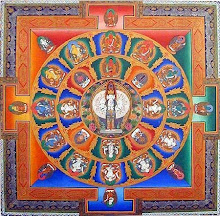




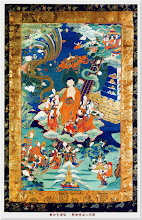

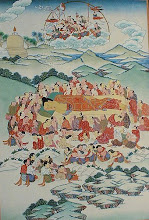


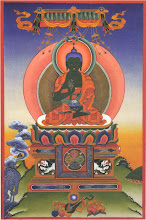




.jpg)

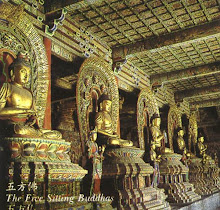













No comments:
Post a Comment